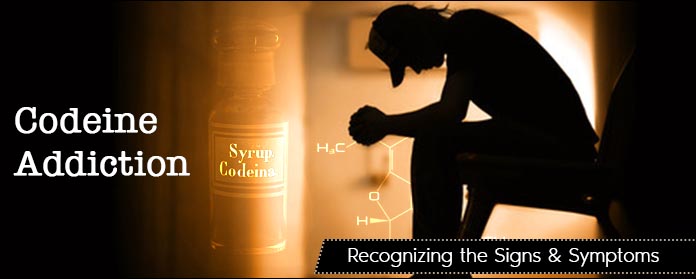While the opioid epidemic continues to rage in the United States, a new, more insidious issue is looming. SUBOXONE strips, a drug used to treat opiate addiction, is also used to manage pain.
For many users, both opiate addicts and individuals prescribed the drug for chronic pain, SUBOXONE becomes another source of addiction, with attendant withdrawal symptoms upon cessation.
In addition, SUBOXONE is becoming a sought-after street drug and an addictive substance in its own right, with the sublingual (under-the-tongue) strips being sold under street names such as:
- Bupes
- Boxes
- Oranges
- Sobos
- Stop signs
Non-medical use of SUBOXONE is known to cause addiction.
SUBOXONE Treatment with SUBOXONE Strips
While SUBOXONE can be used to manage chronic pain, it is most often prescribed as part of a treatment program to treat opiate addiction.
A study by the National Institute on Drug Abuse (NIDA) found 49 percent of the 600 participants who received SUBOXONE for opioid addiction reduced their painkiller dependency during treatment.
Once SUBOXONE was discontinued, however, the success rate dropped to 8.6 percent, suggesting that patients are merely replacing one addiction with another.
Although treatment and dosage amounts are dependent upon individual cases, typical treatment plans are as follows:
- Those in opioid withdrawal from short‐acting opioid products will receive divided doses of up to 8 mg/2 mg SUBOXONE on the first day of treatment, followed by a single dose of 16 mg/4 mg of SUBOXONE on the second day.
- Individuals with methadone or long‐acting opioid dependency will receive sublingual buprenorphine monotherapy on the first two days of treatment.
- Maintenance dosages of SUBOXONE usually consist of a single daily dose of 16 mg/4 mg.
Again, a medical professional will take into account each patient’s situation, needs, and health before determining a recovery plan that includes SUBOXONE.
SUBOXONE Side Effects
SUBOXONE use is associated with several common side effects, including:
- Nausea
- Vomiting
- Drowsiness
- Constipation
- Headache
- Dizziness
If you’re undergoing treatment for opioid addiction, these side effects can be minimized by lifestyle changes that your SUBOXONE doctor can suggest.
Serious side effects can include:
- Adrenal gland malfunction
- Breathing problems
- Fainting
- Irregular heartbeat
- Mood changes
- Liver disease
- Allergic reaction
- Dependence
Most of the severe effects are associated with initiation of treatment after severe opioid use, and when SUBOXONE is injected, mixed with alcohol, opioids, or otherwise abused.
The SUBOXONE High
SUBOXONE is an opioid medication, and the high associated with it is similar — if you’ve not already been taking opioids.
Users typically feel a slight euphoria, followed by a feeling of calm.
How Long Does SUBOXONE Stay in Your System?
SUBOXONE has a long half-life of about 37 hours. This means that it takes around nine days for the drug to clear your system.
However, metabolites of the drug can remain in your body for longer.
How Long Does SUBOXONE Stay in Your Urine?
In urine testing, samples were clear of SUBOXONE within eleven days of dosing, depending on overall health, chronicity of use, and other variables.
SUBOXONE Withdrawal
Like any opioid, SUBOXONE has withdrawal symptoms that can range from mild to severe. Typical symptoms of SUBOXONE withdrawal include:
- Changes in Body Temperature– Withdrawing users can experience intense flashes of coldness or heat throughout the body.
- Abnormal Skin Sensations– There may be a crawling or itching sensation, or you can develop goosebumps.
- Fatigue– Tiredness and lethargy are common withdrawal symptoms.
- Muscle Discomfort– This can range from cramping and spasms to pain throughout the body.
- Drug Cravings – Cravings, both mental and physical, are natural during SUBOXONE withdrawal.
- Sweating– As your body tries to detoxify, it clears SUBOXONE through sweat, including severe night sweats.
- Nausea and Vomiting– One of the most common withdrawal symptoms from opioids, vomiting and nausea are typical of SUBOXONE withdrawal.
- Loss of Appetite– This may be due to nausea, or it may occur on its own.
- Diarrhea– This is a common withdrawal symptom that can be managed with increased water intake to prevent dehydration.
- Difficulty Sleeping– Insomnia, restlessness, and inability to get restful sleep are all common.
- Irritability, Moodiness, and Anxiety– As your brain adjusts to less dopamine, you may feel out-of-sorts, easily aggravated, or highly anxious.
- Depression – Withdrawal from brain-altering substances often cause depressive episodes as the brain adjusts to lack of chemical input.
Getting Help for SUBOXONE Withdrawal
At a professional rehabilitation facility, knowledgeable doctors can help you manage — and overcome — the symptoms of SUBOXONE withdrawal.
It’s important to seek medical intervention to manage withdrawal from any opioid for a safe and lasting recovery.





